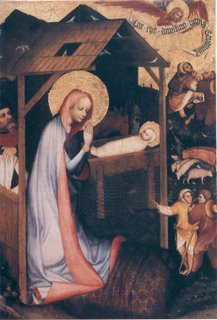
Pope Benedict mentioned Agape; then Eros and there is Egoism. Agape is Love of God attained when the intellect climbs up from the knowledge of man within the family, then to knowledge of the Church as a family and finally up to God as a Trinity. Since in that climb by the intellect the will goes inseparably with it, the will falls in love with the beauty of God and with God. Then both the mind and the will go down to the knowledge and love of the Church as a family and further down to the family. The person, now, knows and loves the Church and knows and loves the family. Note that the rise to God is done by the intellect. When the intellect reaches God, it is joined by the will by loving God. Then the love of God spills down to the neighbors; first to the Church and then to the rests of men.
The second love is Eros. Eros is natural love. It is naturally good and usually exist in the love of parents for children and love between husband and wife. It is commonly found in friendship. Natural self-love is good. However the existence of Eros is short lived due to the fallen nature of man. Because of this Eros has to be elevated to Agape immediately, otherwise it deteriorates to egoism. So marital love immediately descends to treating each other as objects; and parents-children relationship deteriorates into using the children as entertainments. Even friendship between two persons begins as Eros. And it immediately turns into fornication even before they get married. It deteriorates that fast. Usually in one date.
Egoism is love of self in its most selfish and vicious kind. It is from this that all evils come out of the mouth; and makes a man unclean . For from this come evil intentions, murder, adultery, fornication, theft, perjury, slander. All the evils in the world come from these.
Same sex-marriage, pedophile, abortion, euthanasia, family planning, etc. are all evils because they all came from here. The whole world is wallowing in egoism. It has taken away from the world the reason for its existence.
While it is easy for Eros to climb up to Agape, it is almost impossible for egoism to climb up to Eros or Agape. Violent procedures are needed. So the Gospels used violent words in presenting the cure: “To die to oneself,” “To hate oneself.” Egoism is a cruel prison that does not easily give up its prey. And yet our present way of life and ways of the world hurls all souls into this dungeon. This is the dungeon of one’s own free will that had closed itself to God and directed all its love to self.
Christian Asceticism or monasticism is the only known way to free oneself from the imprisonment of egoism. But sadly, most monasteries today, having toned down their way of life has been unable to do so. Only the truth of humility, working through renunciation to the point of self-contempt and hating one’s life can rid us of egoism. This is why St. Benedict, St. Bernard, St. Ignatius and most of the saints had given due attention to this virtue that accompanies Faith, Hope and Charity.










